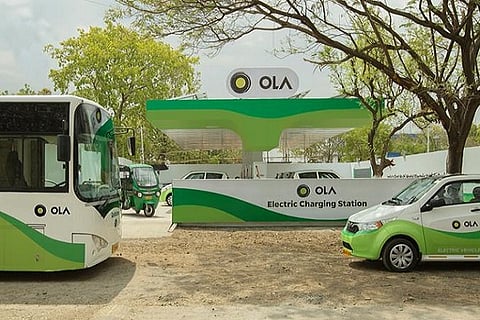

Bengaluru-based ride-hailing major Ola, which has been looking to up its play in the electric vehicle segment has released a report on India’s first multimodal E-Mobility initiative. The report is by Ola Mobility Institute, Ola’s policy research and social innovation think-tank titled ‘Beyond Nagpur: The Promise of Electric Mobility’, and offers insights from extensive electric vehicle operations to help inspire business models, provide data to inform policy and encourage guidelines that will expedite the national effort to adopt electric mobility.
The study primarily focused on experimenting with various scenarios that would test the viability of EVs on economic metrics. One such essential metric, the Total Cost of Ownership or TCO, includes the direct and indirect costs of purchasing, running and maintaining a commercial vehicle over its typical lifetime of four years, making it a key driver to proliferate EVs on Indian roads.
One of the key findings of the report was that with small vehicles dominating Indian roads, any attempt at electrification of the country’s vehicle fleet must address the two and three-wheeler segments. Additionally, insights from the report suggest that TCO parity for four-wheelers is still years away, and hence other segments should be prioritised for electrification.
The report also notes that early adopters of this segment will likely be high-mileage commercial owners, given the economic incentive over the on-road life of internal combustion alternatives.
And in terms of bringing down cost of ownership, shared, public and commercial transport electric vehicles are better poised to bring down the total cost of ownership as opposed to an EV being used as a personal vehicle, the report states. This is because the highest proportions of passenger-kilometres travelled are by public and shared vehicles. Additionally, the largest fleets in the country are maintained by government agencies, civic bodies and app based aggregators.
The report also takes learning from Ola’s electric vehicle pilot in Nagpur on what can be done to improve and encourage adoption of EVs.
“For example, Ola’s EV pilot has shown significant operational pressure on charging stations during peak periods, suggesting utilization challenges for infrastructure. The pilot also showed substantial potential for battery swapping as a reliable charging mechanism for small format vehicles,” the report states.
The report further notes that during the Nagpur pilot, lithium-ion battery swapping increased the available operating time for three wheelers by 25% compared to fixed battery systems, and by 50% when compared to lead-acid battery powered alternatives.
Ola claims that the electric fleet by Ola in Nagpur - a combination of e-rickshaws and e-cabs - has served over 3,50,000 customers, clocked over 7.5 million km, saved over 5.7 lakh litres of fossil fuel, and reduced CO2 emission by over 1,230 tons since its inception.